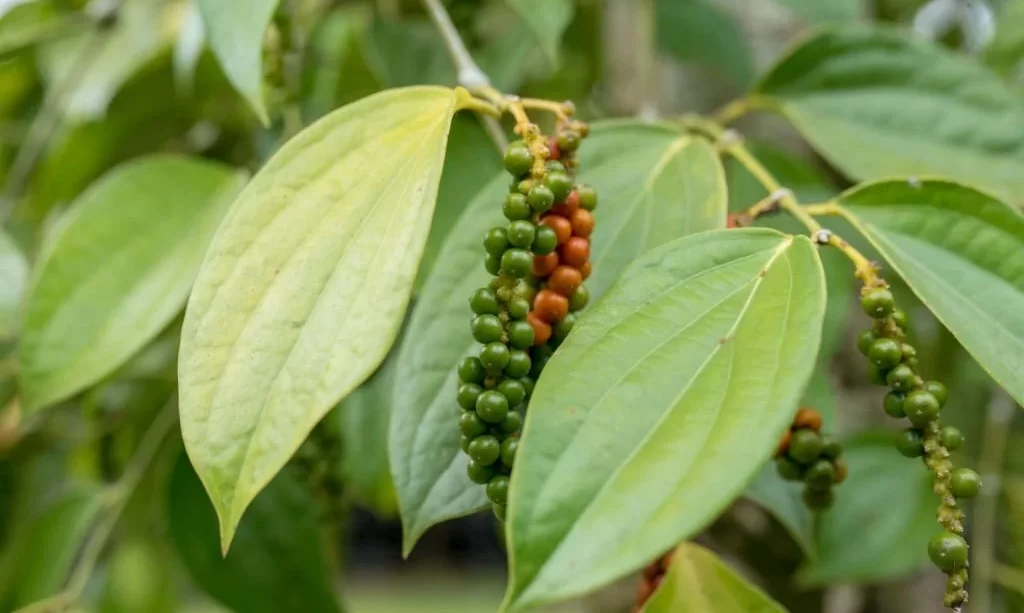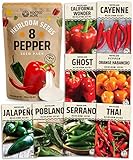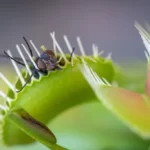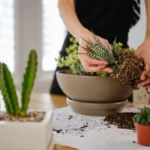The joy of growing peppers in your garden extends far beyond the pleasure of harvesting them for culinary delights. It’s also about preserving the unique characteristics and flavors of your favorite pepper varieties for future growing seasons. One essential aspect of this journey is learning how to harvest pepper seeds effectively. In this guide, we will walk you through the steps to gather, save, and store pepper seeds, ensuring that your garden continues to flourish with the peppers you love. Our journey begins with the crucial step of selecting the right peppers for seed harvesting.
- 8 FAVORITE PEPPER SEEDS – Delight in a great mix of both sweet and spicy pepper varieties compiled just for you: California Wonder, Cayenne, Ghost, Jalapeño, Orange Habanero, Poblano, Serrano, Thai.
- 30 SEEDS PER VARIETY, BONUS MARKERS & GROW GUIDE – This hot pepper seed pack will grow 240+ robust pepper plants. Included in this pack are free plant markers for seedling tracking, and a detailed planting guide from sowing to harvesting.
- HIGH GERMINATING SEEDS – Tested and guaranteed germination rate when grown under optimal conditions, which means no seed will go to waste.
- NON GMO, USA, HEIRLOOM PEPPER SEEDS – We only give you the best. Our open-pollinated seeds are sourced in the USA, without any genetic alteration, and securely packed per variety enclosed in an airtight resealable mylar bag.
- BEST VALUE FOR MONEY – We take pride in this assorted seed pack which has more pepper seeds than other brands. Wrapped in gorgeous fresh-looking packaging, this pack can also be the perfect gift to your friends and family.
Selecting the Right Peppers
The foundation of successful seed harvesting lies in choosing the right peppers. Not all peppers are equal when it comes to seed-saving, and selecting the appropriate ones is paramount to the process. Here’s how to do it:
Healthy and Mature Peppers: Opt for peppers that are healthy, mature, and free from disease or deformities. Healthy plants are more likely to produce viable seeds. Look for peppers that have fully ripened on the plant and have reached their mature color, whether it’s green, red, yellow, or any other hue characteristic of the variety.
Open-Pollinated or Heirloom Varieties: It’s essential to select peppers from open-pollinated or heirloom varieties if you intend to save seeds. These types of peppers produce offspring that are true to the parent plant, ensuring that the next generation of peppers retains the same flavor, size, and characteristics. Avoid harvesting seeds from hybrid peppers, as they may not produce consistent results.
Diverse Varieties: If you have multiple pepper varieties in your garden, consider saving seeds from a diverse range of peppers. This helps preserve a broader genetic pool, which can enhance the long-term viability of your pepper seeds and the overall health of your garden.
By carefully selecting the right peppers for seed harvesting, you lay the foundation for a successful seed-saving journey. In the following sections, we will delve into the practical steps of harvesting, drying, and storing pepper seeds, empowering you to become a skilled seed saver in your own garden.
Gathering Your Materials
Before embarking on your pepper seed-harvesting adventure, it’s essential to gather the necessary materials. Having the right tools on hand ensures a smooth and efficient process. Here’s what you’ll need:
Gloves: Protect your hands by wearing gloves, especially if you’re handling hot or spicy pepper varieties. Gloves prevent skin irritation and the accidental transfer of pepper oils to sensitive areas.
Cutting Board: A clean cutting board provides a stable surface for cutting and preparing the peppers for seed extraction.
Knife: A sharp knife is essential for cutting the peppers in half and removing the seeds. Choose a knife that’s comfortable to hold and easy to control.
Bowl: Use a bowl to collect the seeds and pulp as you extract them from the peppers. Opt for a bowl with a wide opening to make the process more manageable.
Spoon: A spoon with a rounded edge is ideal for scooping out the seeds and pulp from the pepper halves. It helps ensure that you can efficiently separate the seeds from the surrounding flesh.
Fine Mesh Strainer: A fine mesh strainer is crucial for cleaning and rinsing the harvested seeds thoroughly. It allows you to separate any remaining pulp and debris from the seeds effectively.
With these materials in place, you’ll be well-prepared to embark on the process of harvesting pepper seeds.
- TOUCH SCREEN DESIGN GARDENING GLOVES – The work gloves women with special touch screen design, which more humanization and ergonomic. Can answer the phone anytime without put off your yard gloves while garden working.
- BREATHABLE MATERIAL – The garden gloves for women thorn proof are made of leather, and cotton, the stitching is great. Not only puncture resistance but also soft and thick. As a cactus handling and rose gardening gloves, protect your hands from thron hurt. As weeding tools gardening gloves with claws, You can dig soil by hand without hurting nails. It would be great gardening gifts for women.
- FLEXIBLE AND PRETTY – The womens gardening gloves show great grip performance, microfiber gloves for plants can hold garden tools easily. Pretty patterns printed on leather gardening gloves women, suit for ladies women who like garden work. Great heavy duty gardening gloves.
- STANDARD SIZE – Yard work gloves approximately 9 x 3.95 inches, fit for most women, make sure the width and length of your hands, in order to choose the right size. The gardening gloves are long enough to cover your twist.
- GIFTS FOR GARDENERS – The gardening gloves for women are suitable for gardening working, like pruning, planting, picking, cleaning the garden, and so forth. Perfect every one’s birthday, Christmas, Teachers’s day, Thanksgiving day, Halloween, Labor day, etc. The garden gifts women, women gift, they will love this, as women gardening gift.
Harvesting Pepper Seeds
Harvesting pepper seeds requires careful handling to ensure the seeds’ viability and quality. Here’s a step-by-step guide on how to do it:
- Cut the Peppers: Begin by selecting ripe and healthy peppers from your garden. With a sharp knife and a clean cutting board, carefully cut the peppers in half lengthwise.
- Remove the Seeds and Pulp: Use a spoon to gently scoop out the seeds and the surrounding pulp from the pepper halves. Be as thorough as possible, but don’t worry if a little pulp remains attached to the seeds; you’ll clean them later.
- Collect in a Bowl: Place the seeds and pulp in a bowl as you go along. Continue this process until you’ve collected seeds from all the peppers you wish to harvest.
- Rinse the Seeds: Take the bowl of seeds and pulp to a sink. Under running water, use your hands to gently agitate and rinse the seeds. This step removes any remaining pulp and helps separate the seeds from debris.
- Strain the Seeds: Transfer the rinsed seeds to a fine mesh strainer. Hold the strainer under running water and continue rinsing until the seeds are clean and free from pulp. Gently shake the strainer to remove excess water.
- Dry the Seeds: Spread the cleaned seeds on a paper towel or a plate in a single layer. Allow them to air dry completely. This can take one to two weeks, depending on the humidity in your environment. Ensure the seeds are thoroughly dry to prevent mold during storage.
By following these steps, you’ll successfully harvest pepper seeds, setting the stage for preserving and growing your favorite pepper varieties in the seasons to come. In the subsequent sections, we’ll explore how to properly dry and store your pepper seeds, ensuring their longevity and vitality.
Drying the Seeds
Properly drying pepper seeds is a crucial step in the seed-saving process. It ensures the seeds remain viable and free from moisture, which can lead to mold or decay. Here’s how to dry pepper seeds effectively:
- Spread the Seeds: After rinsing and straining the seeds, spread them out in a single layer on a paper towel, a plate, or a fine mesh screen. Ensure that the seeds are evenly distributed and not clumped together.
- Choose a Dry Location: Place the seeds in a dry, well-ventilated area. It’s important to select a spot where they won’t be exposed to direct sunlight, as excessive heat can damage the seeds. A room with good air circulation is ideal.
- Patience is Key: Allow the seeds to air dry naturally. Depending on the humidity levels in your environment, this process can take anywhere from one to two weeks or even longer. Be patient and resist the temptation to rush the drying process.
- Test for Dryness: To check if the seeds are fully dry, press one seed between your fingernail and thumb. If it’s hard and doesn’t leave any moisture on your nail, it’s ready for storage. If it feels soft or leaves a mark, it needs more drying time.
- Remove Any Remaining Debris: Before storing the seeds, make sure they are entirely free from any remaining debris or pulp. You can gently blow on the seeds or use a small brush to remove any loose particles.
Storing Pepper Seeds
Proper storage is the key to preserving the viability of your pepper seeds. Follow these steps to ensure your seeds remain healthy and ready for future planting:
- Label and Package: Place the dried seeds in a labeled envelope or an airtight container. Include important information such as the pepper variety and the date of harvest. This labeling will help you keep track of your seeds.
- Keep Them Dry: Store the sealed envelopes or containers in a cool, dry, and dark location. Humidity can be detrimental to seed viability, so avoid storing them in a damp or humid environment.
- Moisture Control: To further prevent moisture buildup, consider including a moisture-absorbing packet or a small sachet of silica gel in the storage container. These help maintain the dryness of the seeds.
- Temperature Control: Aim to keep the storage temperature consistent. Fluctuations in temperature can lead to condensation inside containers, potentially harming the seeds.
- Regularly Check Viability: Periodically test the viability of your stored seeds. You can do this by placing a few seeds on a damp paper towel in a warm location. Check for germination; viable seeds will sprout.
By carefully drying and storing your pepper seeds following these guidelines, you’ll ensure that they remain viable for years to come. This allows you to continue growing your favorite pepper varieties and share seeds with fellow gardeners, contributing to the sustainability of your garden and the joy of future harvests.
Testing Seed Viability
Testing the viability of your stored pepper seeds is a critical step in ensuring they will germinate when it’s time to plant them. Here’s how to assess the viability of your pepper seeds:
- Prepare a Damp Paper Towel: Moisten a paper towel thoroughly without soaking it. It should be damp but not dripping wet.
- Place the Seeds: Take a small number of seeds from your stored collection and place them evenly spaced on the damp paper towel.
- Fold and Seal: Fold the paper towel over the seeds to cover them completely. Then, place the folded paper towel with the seeds in a resealable plastic bag.
- Warm Location: Put the bag with the seeds in a warm and consistent location, ideally around 70°F (21°C). This simulates the conditions for germination.
- Check for Germination: Over the course of several days, regularly check the seeds for signs of germination. Viable seeds will sprout and produce tiny seedlings.
- Record the Results: Keep a record of the number of seeds that germinate and the time it takes for them to sprout. This information will help you assess the overall viability of your seed collection.
Remember that the percentage of seeds that germinate can decline over time, so it’s a good practice to periodically test a sample to ensure your stored seeds remain viable.
Labeling and Record Keeping
Maintaining clear labeling and accurate records is vital for organized seed saving and garden planning. Here’s how to manage this aspect effectively:
- Label Seed Packets: When storing seeds in envelopes or containers, label them clearly with the pepper variety, the date of harvest, and any other relevant information such as location or specific characteristics.
- Create a Seed Inventory: Keep a detailed inventory of all the seeds you have saved. Include information on the variety, quantity, and storage date. Digital spreadsheets or seed-saving apps can help you manage this information efficiently.
- Track Germination Rates: Record the results of your seed viability tests, noting the percentage of seeds that successfully sprouted. This data will inform you about the overall health of your seed collection.
- Rotate Seeds: To maintain seed viability, practice seed rotation. Use older seeds first and replenish your collection with fresh seeds as needed.
- Share Knowledge: If you share or trade seeds with other gardeners, accurate labeling and records are essential. It ensures that both you and the recipients know exactly what they are planting.
Conclusion
In conclusion, learning how to harvest and save pepper seeds is a rewarding endeavor that allows you to preserve your favorite pepper varieties and share them with fellow gardeners. By selecting the right peppers, gathering the necessary materials, and following the steps for harvesting, drying, and storing seeds, you can ensure the long-term viability of your seed collection.
Testing seed viability periodically and maintaining meticulous records will help you track the health of your seed collection and make informed decisions about when to replace or replenish seeds.
As you continue to save and sow pepper seeds, you contribute to the sustainability of your garden, promote genetic diversity in your crops, and cultivate a deeper connection with the wonderful world of gardening. So, go ahead and embark on your seed-saving journey, and may your future pepper harvests be bountiful and flavorful.





